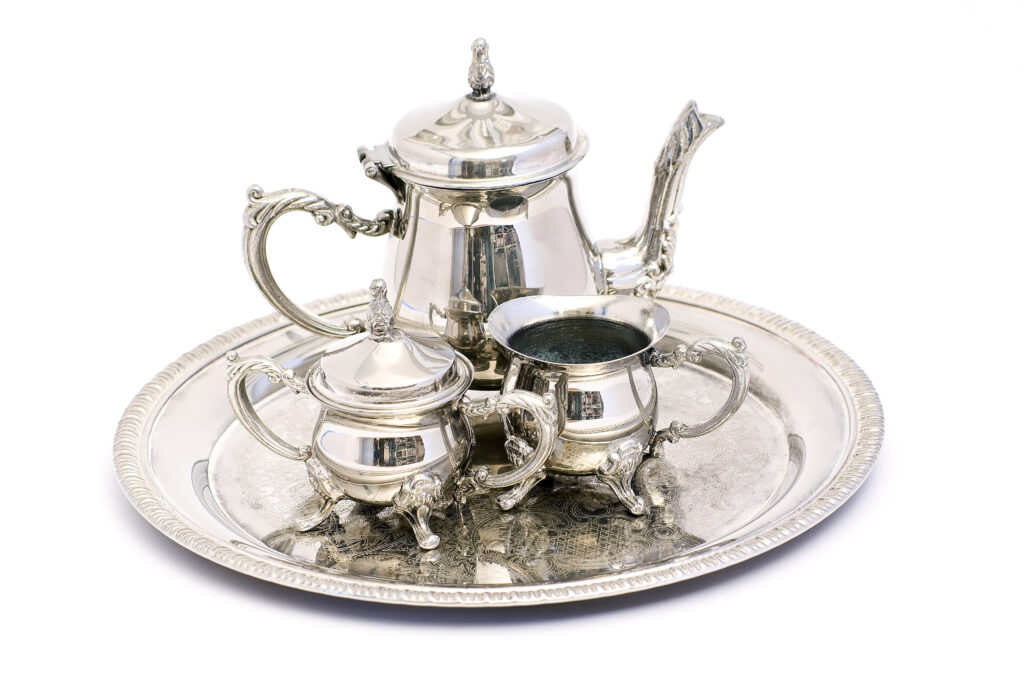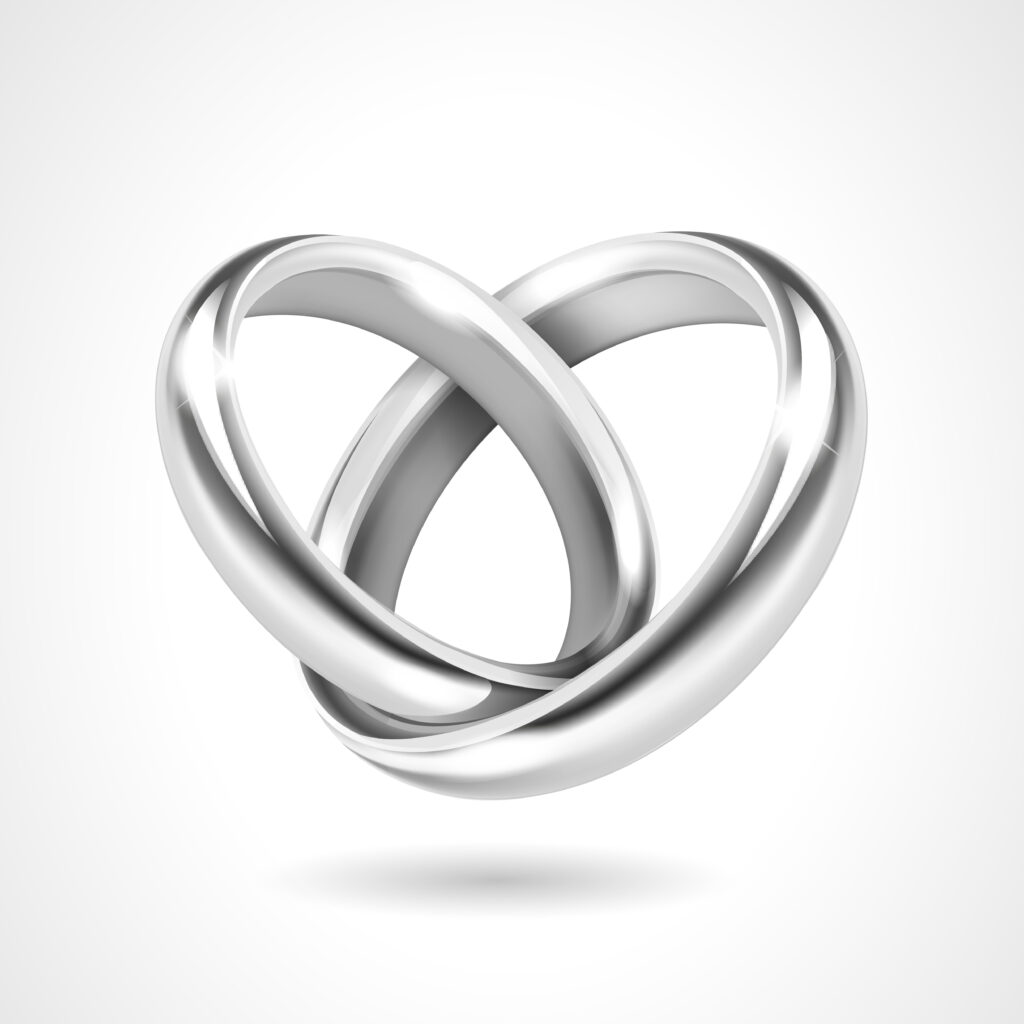Silver is often used interchangeably with the phrase “sterling silver”. However, there is a significant distinction between the two.
Silver describes the element in its pure form; meanwhile, the composition of sterling silver is about 93% pure silver and 7% other elements. Although primarily made of the same metal, the two materials significantly differ in properties, especially when it comes to their strength.
Before purchasing silver-based jewelry, you should know the difference between the two types of metal that are available.
Keep reading to learn how silver and sterling silver differ and to find out which is better!
What are the Properties of Pure Silver?
Before we discuss the alloy known as sterling silver, let us first discuss the properties of silver in its pure form.
As a basic description, silver is the 47th element on the periodic table (Ag).
Since the discovery of silver, it has been a commonly used metal in human society.
The element’s first known use was in coins and currency.
Other frequent applications for silver included jewelry, utensils (hence the name silverware), mirrors, and figurines.
Valued primarily for its highly reflective properties and beautiful shine, silver became a symbol of wealth and prosperity.
Large silver deposits found in the United States encouraged many to flock to the region (a pattern similar to the California Gold Rush).
Eventually, silver lost its status as a valuable metal, bringing an end to the craze for ownership.
If you’re interested, you can learn more about the history of silver from Gainesville Coins here!
At the time of writing this article, an ounce of silver was worth $25.47.
The main difference between silver and sterling silver is functionality and strength.
Although gold is the most malleable metal, silver follows closely behind.
Because silver is so soft, it is not the ideal choice for jewelry use. Items made from pure silver are very fragile and not very functional.
Not convinced? Watch this video to see how malleable silver is!
As you saw in the video, pure silver begins to bend with minimal pressure added.
Now think about how this would affect silver jewelry.
Each small bump or scratch will have a significant impact on the piece of silver jewelry.
Because silver jewelry is so easily damaged, it would quickly depreciate.
One concern when purchasing silver jewelry is care and cleaning. Learn more about cleaning silver jewelry in the section below!
Cleaning Pure Silver Jewelry
Pure silver is not susceptible to rust or tarnish.
However, storing silver jewelry in contact with jewelry made from other types of metal may cause tarnish to appear on the silver jewelry.
Prevent your jewelry from tarnishing by storing the pieces in a sectioned jewelry box or individual cloth bags.
Already have some tarnish on your silver jewelry? Watch the video below to learn how to clean it!
When cleaning silver jewelry, be gentle.
Even a toothbrush has the potential to scratch the surface.
Now that we know more about pure silver, we can discuss what sterling silver is and how it compares.
What is Sterling Silver?

Sterling silver consists primarily of pure silver.
However, to increase the strength of the metal, it is mixed with other metals.
This new mixture is an alloy.
The London Goldsmith Company set the first standard for sterling silver composition in the early 1800s.
This standard is still followed today in the United States to ensure alloy quality.
Sterling silver must contain 92.5% pure silver and 7.5% other metals.
The most common metal used to make sterling silver is copper or zinc. Neither copper nor zinc is a magnetic element.
Run a magnet over your jewelry to verify it is sterling silver and not silver plated.
If the piece of jewelry is magnetic, it is not sterling silver.
This alloy mix creates more durable pieces of jewelry that are less susceptible to damage.
Although sterling silver is less malleable than pure silver, it is still significantly softer than other metals.
The malleability of the metal combined with the strength of the alloy makes sterling silver the perfect choice for intricate pieces of jewelry.
Sterling silver is favorable for more than just jewelry because it maintains the same shiny properties of pure silver and the strength of the alloys.
Sterling silver has many uses which include silverware, platters, silver plated items, and more.
A downside to sterling silver is that it tarnishes rather quickly.
When silver mixes with other metals, chemical reactions occur. These reactions result in the jewelry changing color or tarnishing.
Learn how to clean sterling silver jewelry in the section below!
Cleaning Sterling Silver Jewelry
Sterling silver jewelry, although more durable, will require more frequent cleaning and polishing than pure silver jewelry.
However, cleaning sterling silver jewelry is not a complicated process.
Watch the following video to learn how to properly clean and store your silver jewelry!
As mentioned in the video it is best to store pure silver and sterling silver jewelry separately.
This keeps the silver from reacting with the other metals and tarnishing the jewelry.
But wait, doesn’t sterling silver already react with the metals in its alloy? Yes, yes it does.
You should still store sterling silver separate from other pieces of jewelry.
Doing so will slow down the tarnishing process, making it easier to maintain.
Which is Better: Silver or Sterling Silver?
So which is the better choice?
Both sterling silver and pure silver have several pros and cons. Whether pure silver or sterling silver is better will depend on your personal preferences.
While fairly similar, pure silver and sterling silver do have their differences
Pure silver is weaker than sterling silver, but it does not tarnish unless exposed to other metals.
Meanwhile, sterling silver is much stronger than pure silver but will require frequent cleaning and polishing.
If you tend to be rougher on your jewelry, sterling silver will be the better choice.
However, if you do not have the time or ability to maintain sterling silver jewelry, pure silver may be the correct option.





